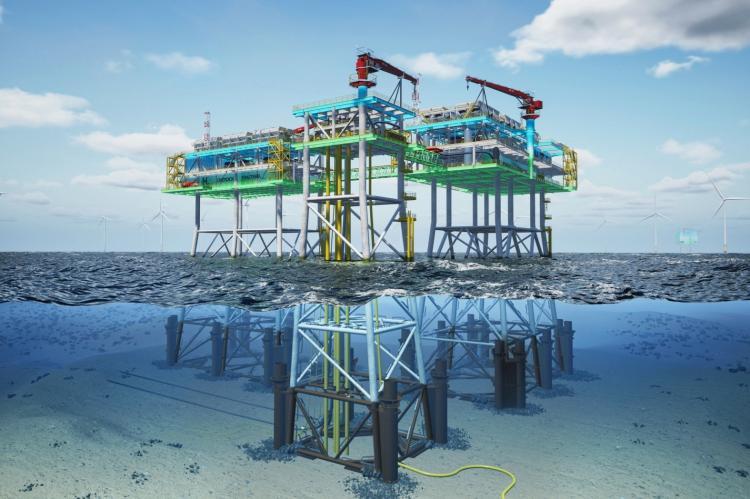Tractebel And Partners Collaborate For Offshore Wind-to-hydrogen Infrastructure

Tractebel has partnered with other companies to develop the world’s first-ever offshore infrastructure and processing facility concept to store hydrogen in caverns.
Tractebel Overdick GmbH’s team of offshore experts unveiled the design study outlining an innovative solution that can be used for high volume hydrogen storage on the seas. The platform’s design comprises a scalable platform for compressing and storing a maximum of 1.2 million cubic meters of clean hydrogen.
The revolutionary infrastructure uses underground salt caverns as a buffer and storage facility for the offshore hydrogen before being channeled through a pipeline network to the grid located onshore and finally to customers and consumers.
With the green energy revolution taking the world by storm, clean hydrogen produced from offshore wind energy is increasingly becoming a critical component of the much anticipated global energy transition.
A Viable Solution with Sustainability in Consideration
The current hydrogen production will only make a difference if the rate of production reaches an industrial scale, and the production of enormous amounts from renewable sources is key to supplying future hydrogen energy demands. Offshore sites like the one designed by Tractebel are vital to the targeted industrial-scale production.
The newly designed compressor and storage platforms can process 400,000 Nm3/h of clean hydrogen pressurized to 180 bar and stored in well-developed underground salt caverns. The storage facilities are a buffer to production peaks, enabling an economical export pipeline design due to optimized flow rates.
The existing offshore infrastructure can use clean hydrogen directly instead of relying on other energy sources for their operations hence a major boost to decarbonization efforts of the whole offshore industry.
According to experts, the North sea provides a suitable ground for the project due to its beneficial geological conditions resulting from the underground rock salt formation, allowing for the leaching of caverns to create ample storage volumes.
The study assumes 1.2 million m³ storage volume as the initial value needed for efficient coverage of peak production rates of offshore hydrogen.
"This storage is also necessary for the long term because it will be an essential building block for the success of the energy transition,” says Klaas Oltmann, the Director of Business Development at Tractebel Overdick.
“Offshore caverns can buffer the renewable energy produced in the form of hydrogen and therefore balance out the divergence between energy production and demand profiles. In this case, the proposed size of the offshore storage facility is merely a starting point.”
High Seas Hydrogen Production Infrastructure
The designed offshore complex comprises a wellhead platform designed to operate the caverns as well as a series of compression platforms enabling an increase in state capacity. Additional modules can also be used to expand the plant in the future if the need arises.
Based on the study assumption, the platform complex has a capacity equated to converting 2 GW of offshore wind power into green hydrogen with the possibility of extension and individual adaptations at any time.
Offshore storage and compression hubs like the one designed by Tractebel can boost the flexibility of offshore hydrogen production in the future while also cutting costs.
Centralised offshore hydrogen hubs also facilitate the integration of smaller-scale hydrogen production, which is to be expected within the scope of capacity expansions while re-powering offshore wind farms in the future.
“At the same time, they offer an economically viable option, as the export and compression of hydrogen produced offshore can be bundled. This significantly reduces the overall costs for future projects,” explains Oltmann.

